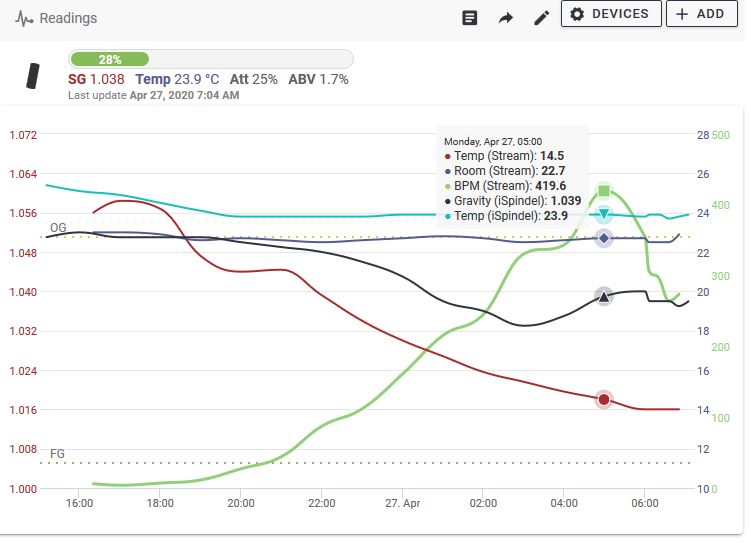Sorry I'm late to this thread, it's a good one. My own thoughts based on 21 years of bottling >160 batches:
First of all, let's get this straight: This thread is much more applicable to bottling, and especially to novice homebrewers who are bottling. If you are kegging, take a step back, as many discussions both above and within this post are really not applicable.
Key point: PATIENCE resolves a lot of issues, and carbonation is just one of them. The trouble is, novice brewers always seem to be in a hurry, excited to taste their beer, and tend to bottle too early, often leading to gushers and bombs. Even experienced homebrewers fall prey to this tendency, including myself on rare occasion.
Besides the Tilt option (which is a good one!), and besides opening the fermenter wide-open to check the gravity every 3 days, another option without actually checking gravity is to first wait until there is zero airlock activity -- ZERO activity -- then either:
(1) wait a whole 'nother week to be safe before bottling. This assumes you actually had airlock activity to begin with. If not, in those first ~2 critical days of fermentation, check the seal on your lid and airlock until you do have airlock activity.
*OR*
(2) peek to see if there is any krausen (and obviously a clear fermenter makes this an oxygen-free step). If there is no appreciable krausen, then look for a lack of milky yeast haze (unless brewing an NEIPA, I guess). When the yeast is obviously beginning to settle out and you can see through at least a few inches of clear beer at the top, then the fermentation should be basically done. If not, peek again very briefly looking for these signs every ~3 days until the yeast is obviously settling out -- no need for gravity readings. Then, once you are very sure that the yeast is settling out, THEN wait at least ANOTHER 3-4 days before bottling, to be safe.
As you can see, checking the seals on your lid and airlock are pretty important if going with this method, and option (1) is a little easier than option (2).
All I've done here is to try to demonstrate some rules, for novices or anyone who likes to follow rules, that will teach them to be more patient before bottling. In so many ways, patience leads to better beer. True, you don't really have to check gravity every 3 days. I usually don't. But, I'm also very patient. I'll often leave a batch in primary for 3, 4, 5, 6, 7, even 8 weeks before bottling, because I already have more than enough beer to drink (currently at least 10 cases), plus I'm extremely lazy, I dislike bottling and this makes me procrastinate on it, and the extra time rarely hurts anything honestly, and more often helps clear the beer better, resulting in less off-flavors and less sediment in the bottles. I haven't experienced yeast autolysis in many years. Oxidation can be the bigger problem, being overly lazy like me. But 99% of people don't have my laziness problem, so they shouldn't worry about it much either, especially if they don't play around with gravity readings every 3 days as the OP mentions, but just monitor for doneness visually and patiently.
And if you don't have a clear fermenter (I use all glass, for a multitude of reasons I won't get into here), consider investment in clear fermenters so you can see what's going on without exposing your beer to oxygen.
And if you're a kegger, well, good for you, do what you want. Some of us like me just don't brew big enough batches or drink it fast enough to make any sense, plus the equipment is more expensive, yadda yadda. Advantages & disadvantages of each method, and neither method is inherently "better" than the other, too many variables to declare one method perfect for everyone.
Cheers all.








![Craft A Brew - Safale BE-256 Yeast - Fermentis - Belgian Ale Dry Yeast - For Belgian & Strong Ales - Ingredients for Home Brewing - Beer Making Supplies - [3 Pack]](https://m.media-amazon.com/images/I/51bcKEwQmWL._SL500_.jpg)

















































